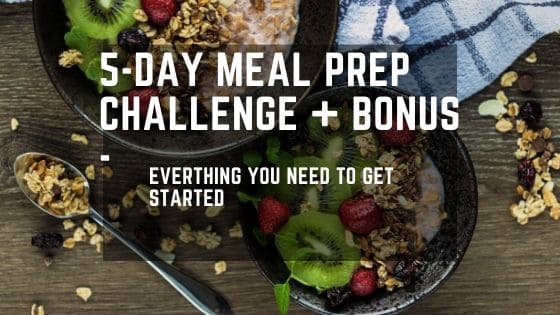Last Updated on February 24, 2024 by TheMealPrepNinja
Hello, I’m excited to share this beginner’s guide to meal prep shopping lists with you. If you’re new to meal prepping or looking to get started, this guide will provide you with all the essential information you need to create a successful meal prep shopping list.
Whether you’re aiming to save time, money, or eat healthier, meal prepping can be a game-changer in your daily routine.
Meal prepping involves preparing and portioning out meals in advance, ensuring that you have ready-to-eat or easy-to-cook meals throughout the week. It’s a fantastic way to stay organized, reduce stress, and prioritize your nutrition.
This post may contain affiliate links, which means we may receive a commission, at no extra cost to you, if you purchase through a link.
Key Takeaways:
- Meal prep can save you time, money, and help you eat healthier.
- Create a meal plan and organize a grocery list to succeed in meal prep.
- Meal prepping benefits individuals with busy schedules or specific dietary requirements.
- Include a variety of essential ingredients such as protein sources, whole grains, and fresh produce in your shopping list.
- Consider budget-friendly shopping strategies and utilize versatile ingredients for meal diversity.
Getting started with a Meal Prep Shopping List
In order to successfully embark on a meal prep journey, it’s crucial to start with a well-planned and organized shopping list. Creating a meal plan and having a comprehensive grocery checklist will not only save you time and money but also ensure that you have all the essential ingredients on hand when it’s time to prepare your meals.
When it comes to meal planning, it’s important to consider your dietary needs, preferences, and goals. Whether you’re looking to eat healthier, save time on cooking, or stick to a specific budget, a meal plan tailored to your individual needs will set you up for success.
Here are some tips to help you get started with a meal prep shopping list:
- Plan your meals: Take some time to decide what meals you want to prepare for the week. This can include breakfast, lunch, dinner, and snacks. Consider your schedule, the number of servings you need, and any specific recipes you want to try.
- Create a grocery checklist: Once you have your meal plan, make a list of all the ingredients you’ll need. Be thorough and ensure you include everything necessary for each recipe. Organize your list by categories such as proteins, grains, fruits and vegetables, and pantry staples.
- Check your pantry: Before heading to the grocery store, take stock of what you already have in your pantry. This will help you avoid buying duplicate items and save money.
- Stick to the list: When you’re at the store, resist the temptation to stray from your shopping list. Stick to the items you’ve planned for your meal prep to avoid impulse purchases.
- Be flexible: While it’s important to stick to your meal plan, be open to making adjustments based on what’s available at the store or any sales or promotions you come across. Don’t be afraid to swap ingredients or try new recipes.
By following these steps, you’ll be well-equipped to create a meal prep shopping list that meets your needs and sets you up for a successful week of healthy and convenient meals.
Remember, meal prep is all about efficiency and planning, so take the time to organize your shopping list and you’ll reap the benefits in the kitchen. If you are a total newby don’t forget to check out my article on Meal Prep for Beginners or Easy Meal Prep Ideas for Beginners.
| Proteins | Grains | Fruits and Vegetables | Pantry Staples |
|---|---|---|---|
| Chicken breast | Quinoa | Spinach | Rice |
| Salmon | Brown rice | Broccoli | Canned beans |
| Tofu | Whole wheat pasta | Carrots | Olive oil |
| Ground turkey | Lentils | Tomatoes | Spices |
Understanding the Basics of Meal Prepping
Meal prepping has gained popularity in recent years as a practical and efficient way to streamline your weekly meal routine. In this section, we will explore the fundamentals of meal prepping, including what it entails, its benefits, and who can benefit from incorporating it into their lifestyle.
What is Meal Prepping?
Meal prepping involves planning, preparing, and portioning out meals in advance, typically for a week. It is a proactive approach to nutrition that allows individuals to save time and effort by cooking and organizing meals ahead of time. By dedicating a specific day or time to meal prepping, you can have ready-to-eat or easy-to-cook meals readily available throughout the week.
The Benefits of Meal Prepping
There are several benefits to adopting a meal prep routine:
- Time savings: Meal prepping eliminates the need for daily meal preparation, saving you valuable time during busy weekdays.
- Money savings: By planning meals in advance, you can make more cost-effective grocery purchases and reduce the temptation to eat out.
- Improved nutrition: Meal prepping allows you to control portion sizes and choose healthier ingredients, leading to a more balanced and nutritious diet.
- Reduced food waste: By portioning out meals and using ingredients efficiently, meal prepping minimizes food waste and promotes sustainable eating habits.
Who Should Consider Meal Prepping?
Meal prepping can benefit a wide range of individuals, including:
- Busy professionals who have limited time for meal preparation.
- Health-conscious individuals who want to maintain a nutritious diet.
- Anyone looking to save money on groceries and reduce food waste.
- Individuals with specific dietary requirements or health goals.
Whether you are a beginner in the kitchen or an experienced home cook, meal prepping can offer convenience, efficiency, and improved nutrition in your daily life.
How to Create a Meal Plan
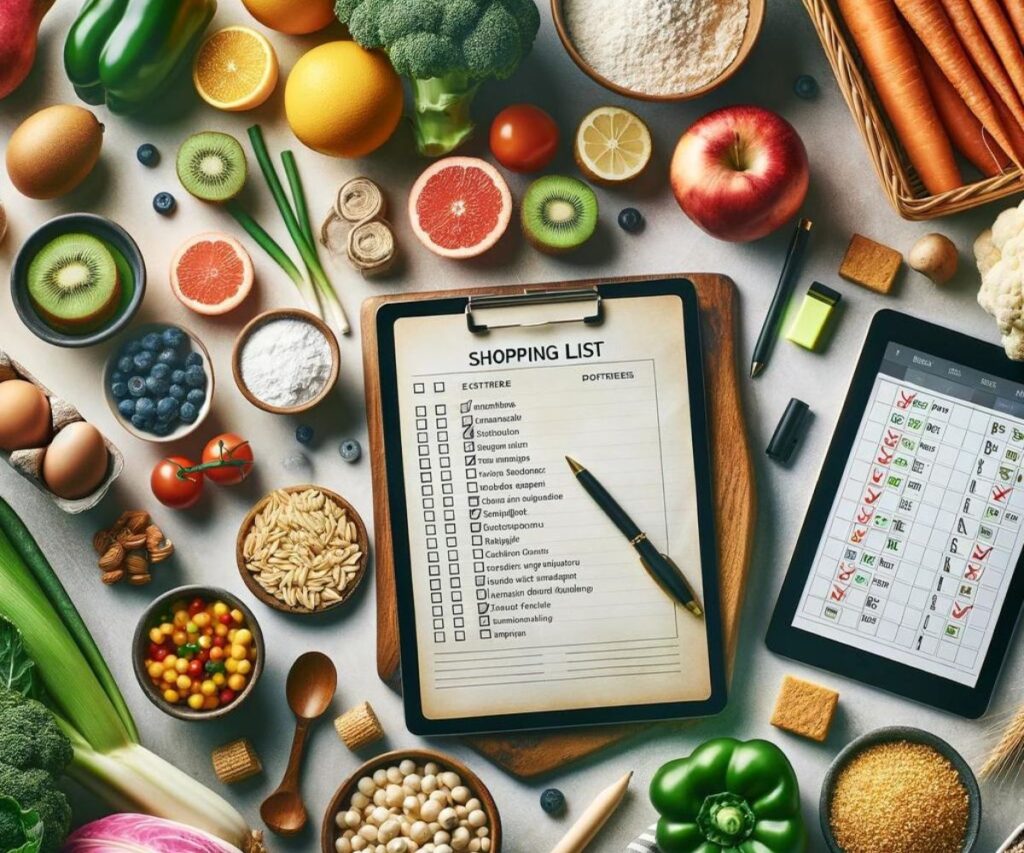
Creating a meal plan is an essential step in successful meal prepping. It allows you to stay organized, save time, and ensure that your meals are balanced and nutritious. Whether you’re a beginner or an experienced meal prepper, following a meal plan can help you stay on track with your goals and make the most of your ingredients.
Here’s a step-by-step guide on how to create a meal plan:
- Set your goals: Determine what you want to achieve with your meal plan. Whether it’s weight loss, muscle gain, or simply eating healthier, clearly define your goals.
- Take stock of your pantry and fridge: Before creating your meal plan, check what ingredients you already have on hand. This will help you minimize food waste and save money by using items you already have.
- Consider your dietary requirements: Take into account any dietary restrictions or preferences you have. If you’re following a specific diet, such as vegetarian or gluten-free, make sure to plan meals that align with your needs.
- Browse simple recipes: Look for recipes that are beginner-friendly and require minimal cooking skills. Choose recipes that use common ingredients and have simple instructions. Here is an example of easy chicken and rice recipes.
- Create a weekly meal plan template: Use a weekly meal plan template to organize your meals for the entire week. This will help you visualize your plan and ensure that you’re incorporating a variety of foods.
- Plan your meals: Fill in your meal plan template with your chosen recipes. Aim for a balanced mix of proteins, carbohydrates, and vegetables. Consider batch-cooking certain meals to save time during the week.
- Make a shopping list: Once you’ve planned your meals, create a shopping list of all the ingredients you’ll need. Group similar items together to make your shopping trip more efficient.
By following these steps, you’ll be able to create a personalized meal plan that suits your goals and preferences as a beginner. Remember, meal planning is a flexible process, and you can always adjust and customize your plan based on your needs and schedule.
Using a weekly meal plan template like the one provided above can be a helpful tool in organizing your meals and staying on track. It allows you to see your entire week’s worth of meals at a glance and helps you avoid decision fatigue when it comes to mealtime.
Meal Prep Shopping List for Beginners
When it comes to meal prepping, creating a well-rounded shopping list is key to ensuring you have all the essential ingredients on hand. In this section, we will explore the essential components of a meal prep shopping list for beginners, focusing on essential protein sources, whole grains and legumes, and fresh produce selection.
Essential Protein Sources
Protein is an essential nutrient that plays a vital role in repairing and building tissues, supporting immune function, and providing energy. When meal prepping, it’s important to include a variety of protein sources in your shopping list. Here are some easy meal prep ideas for essential protein sources:
- Chicken: A lean and versatile protein option that can be used in a variety of dishes.
- Fish: Rich in omega-3 fatty acids and a great source of lean protein. Opt for options like salmon, tuna, or cod.
- Tofu: A plant-based protein option that is versatile and can be used in stir-fries, salads, or as a meat substitute.
- Beans: An affordable and nutritious source of plant-based protein. Include options like black beans, chickpeas, and lentils in your shopping list.
Whole Grains and Legumes
Whole grains and legumes are excellent sources of complex carbohydrates, fiber, and various essential nutrients. They provide sustained energy and are a great addition to any meal prep. Consider including the following in your shopping list:
- Quinoa: A nutrient-dense grain that is high in protein and fiber.
- Brown rice: A whole grain that is rich in nutrients and adds a nutty flavor to your meals.
- Lentils: A versatile legume that is high in protein, fiber, and iron.
- Chickpeas: Packed with protein, fiber, and other essential nutrients, chickpeas are a great addition to soups, salads, and Buddha bowls.
Fresh Produce Selection
Fresh produce is the cornerstone of any healthy and nutritious meal prep. It provides essential vitamins, minerals, and antioxidants that support overall health and well-being. Here are some tips for selecting fresh produce for your meal prep:
- Choose a variety of fruits and vegetables: Include a colorful assortment of fruits and vegetables to ensure you are getting a wide range of nutrients.
- Opt for seasonal produce: Seasonal produce tends to be more flavorful, affordable, and readily available. Check what fruits and vegetables are in season and include them in your shopping list.
- Consider pre-cut options: If time is a constraint, opting for pre-cut fruits and vegetables can save you valuable prep time.
Remember, when shopping for fresh produce, it’s important to choose items that are in good condition, free from bruises or blemishes, and have a vibrant color and fresh aroma.
Now that you have a better understanding of essential protein sources, whole grains and legumes, and fresh produce selection, you can create a well-rounded meal prep shopping list for beginners. By including these key components, you’ll be well on your way to preparing nutritious and delicious meals in advance.
Strategies for Budget-Friendly Shopping

When it comes to meal prepping on a budget, several strategies can help you save money without compromising the quality of your meals. By implementing these budget-friendly shopping strategies, you can create an affordable meal prep plan that fits your financial needs.
Buying in Bulk
One of the most effective ways to save money on meal prep ingredients is by buying in bulk. Purchasing larger quantities of pantry staples, such as rice, pasta, and canned beans, can often be more cost-effective in the long run. Not only does buying in bulk save you money, but it also reduces the frequency of grocery store trips, saving you time and effort.
Seasonal Shopping
Another budget-friendly shopping strategy for meal prepping is to focus on seasonal produce. Seasonal fruits and vegetables tend to be more affordable and of better quality. By incorporating seasonal produce into your meal prep, you can enjoy fresh and nutritious ingredients without breaking the bank. Plus, seasonal shopping supports local agriculture and reduces the environmental impact of long-distance transportation.
Utilizing Coupons and Discounts
Don’t forget to take advantage of coupons and discounts when grocery shopping for meal prep. Look for sales, promotions, and loyalty programs offered by your local grocery stores. Additionally, consider using digital coupons and apps that can help you find the best deals on the ingredients you need. By utilizing coupons and discounts, you can significantly reduce your overall grocery expenses and make meal prepping more budget-friendly.
By implementing these strategies for budget-friendly shopping, you can create a meal prep plan that is not only nutritious but also affordable. Remember, meal prepping doesn’t have to be expensive. With a little planning and smart shopping, you can enjoy the benefits of meal prepping while staying within your budget.
Incorporating Variety into Your Meal Prepping
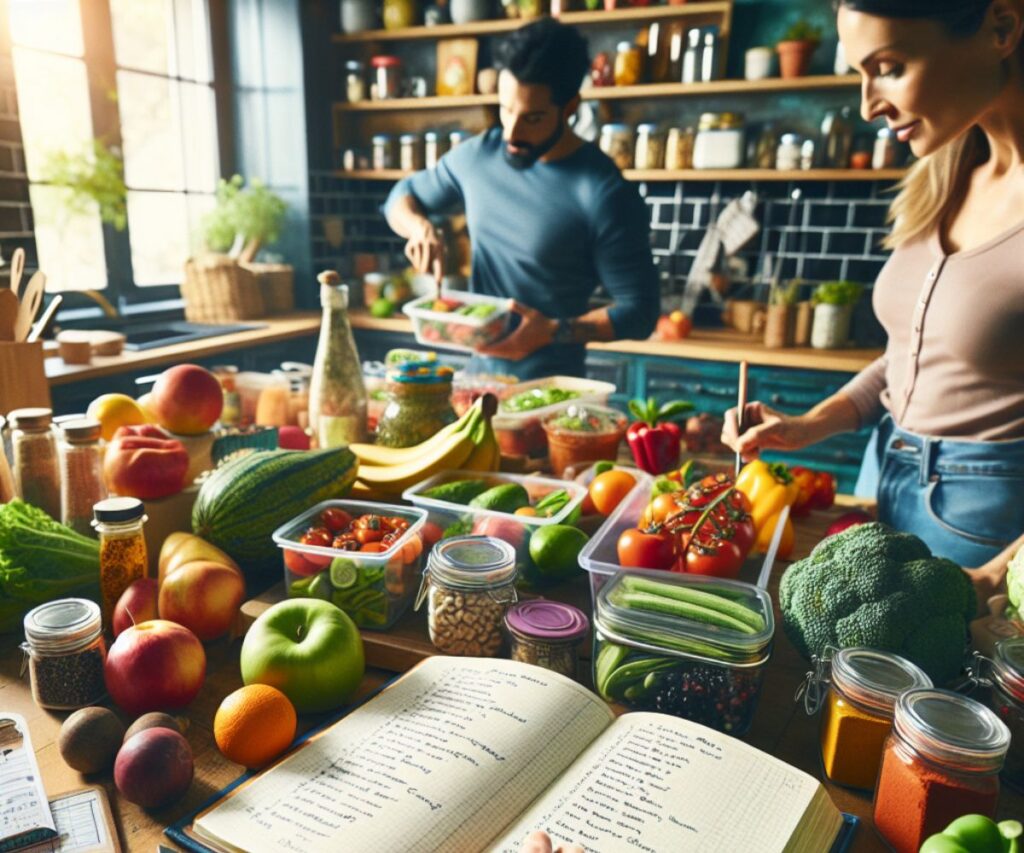
When it comes to meal prepping, variety is key to keeping your taste buds excited and preventing mealtime boredom. By using versatile ingredients that can be incorporated into multiple meals, you can create a wide range of flavors and combinations without spending hours in the kitchen. Here are some tips and tricks to help you incorporate variety into your meal prepping routine:
- Batch Cook: Prepare a large batch of a versatile ingredient, such as grilled chicken, roasted vegetables, or cooked quinoa, that can be used as a base for different meals throughout the week. This saves time and allows you to experiment with different flavors and seasonings.
- Utilize Leftovers: Don’t let leftovers go to waste! Repurpose them into new meals by adding them to salads, wraps, or grain bowls. Leftover grilled chicken can be sliced and added to sandwiches, while roasted vegetables can be turned into a flavorful frittata.
- Experiment with Different Cuisines: Incorporate flavors from different cuisines into your meal prep to add variety. For example, use Mexican-inspired seasonings for one meal, then switch to Asian-inspired flavors for another. This keeps your meals interesting and prevents flavor fatigue.
- Try New Ingredients: Don’t be afraid to try new ingredients in your meal prep. Explore different types of grains, legumes, and proteins to discover new flavors and textures. Adding a new ingredient to your repertoire each week can keep your meals exciting and fresh.
Remember, meal prepping doesn’t have to be monotonous or repetitive. By incorporating variety into your meal prep routine and utilizing versatile ingredients, you can enjoy a wide array of flavors and combinations without sacrificing convenience or nutrition.
“Meal prepping doesn’t have to be monotonous or repetitive. By incorporating variety into your meal prep routine and utilizing versatile ingredients, you can enjoy a wide array of flavors and combinations without sacrificing convenience or nutrition.”
Essential Kitchen Tools for Efficient Meal Prepping
In order to maximize efficiency and streamline the meal prep process, it is essential to have the right kitchen tools and equipment at your disposal. Here are some basic kitchen tools that every meal prepper should have:
Basic Kitchen Tools
- Knives: Invest in a set of high-quality knives that include a chef’s knife, paring knife, and serrated knife. These will be your go-to tools for chopping, slicing, and dicing.
- Cutting Boards: Opt for durable cutting boards that are large enough to accommodate different ingredients without cross-contamination.
- Measuring Cups and Spoons: Accurate measurements are crucial in meal prep recipes. Have a set of measuring cups and spoons on hand for precise ingredient portions.
- Mixing Bowls: Choose a set of mixing bowls in various sizes to accommodate different recipes and meal prep quantities. Stainless steel or glass bowls are recommended for easy cleaning.
- Storage Containers: Invest in a selection of reusable storage containers to store your prepped meals. Look for containers that are microwave-safe and have leak-proof lids for convenience and safety.
Advanced Cooking Equipment
- Food Processor: A food processor can significantly speed up the meal prep process by quickly chopping, mixing, and pureeing ingredients.
- Instant Pot: This versatile kitchen appliance can be a game-changer for meal preppers. It combines the functions of a pressure cooker, slow cooker, rice cooker, and more, allowing for efficient and time-saving cooking techniques.
- Slow Cooker: A slow cooker is perfect for preparing large batches of soups, stews, and protein-rich dishes with minimal effort. Set it in the morning, and you’ll have a delicious meal waiting for you in the evening.
- Blender: A blender is an excellent tool for creating smoothies, sauces, and dressings. It can also be used to puree ingredients for soups and marinades.
By having these essential kitchen tools and equipment on hand, you’ll be well-equipped to tackle any meal prep recipe and culinary challenge. Coupled with time-saving cooking techniques, such as batch cooking and utilizing leftovers, you can make meal prepping an efficient and enjoyable experience.
Nutrition Basics for Meal Prep
When it comes to meal prepping, nutrition is a crucial aspect to consider. Being a certified nutrition coach it is important to meal prep not only for convenience but also to ensure that you are providing your body with the necessary nutrients it needs to thrive. Meal prepping is a great way to take control of your diet and make sure that you are fueling your body with healthy, balanced meals throughout the week.
One of the key benefits of meal prepping is that it allows you to plan out your meals in advance, making it easier to stick to a nutritious diet. By taking the time at the beginning of each week to plan and prepare your meals, you can avoid last-minute unhealthy food choices when you’re short on time or feeling too tired to cook. This can be especially helpful for those with busy schedules or demanding careers.
Planning and preparing your meals in advance gives you the opportunity to focus on creating balanced meals, controlling portion sizes, and practicing mindful eating. By incorporating these nutrition basics into your meal prep routine, you can ensure that you are fueling your body with nourishing and wholesome meals.
1. Balance your meals: Aim to include a variety of macronutrients in your meal prepped meals. This means incorporating a good balance of proteins, carbohydrates, and healthy fats. Include lean proteins such as chicken, fish, or tofu, whole grains like quinoa or brown rice, and healthy fats from sources like avocados or nuts.
2. Practice portion control: Pay attention to portion sizes when meal prepping. Use measuring cups or a food scale to ensure you are getting the right amount of each food group. This will help you maintain a healthy calorie intake and ensure that you are getting the right balance of nutrients.
3. Mindful eating: Take the time to savor and enjoy your meal when you sit down to eat. Eat slowly and pay attention to your hunger and fullness cues. This will help you avoid overeating and allow you to fully appreciate the flavors and textures of your meal prepped dishes.
4. Incorporate nutrients: Make sure to include a variety of nutrients in your pre-prepared meals. This can be achieved by including a rainbow of fruits and vegetables, which provide a range of vitamins, minerals, and antioxidants. Experiment with different flavors and textures to keep your meals interesting and enjoyable.
By following these nutrition basics for meal prep, you can ensure that your meals are not only convenient and time-saving but also nutritionally balanced and satisfying. So, go ahead and create a meal prep plan that nourishes your body and supports your health and wellness goals.
Pro Tips for Meal Prep Grocery Shopping
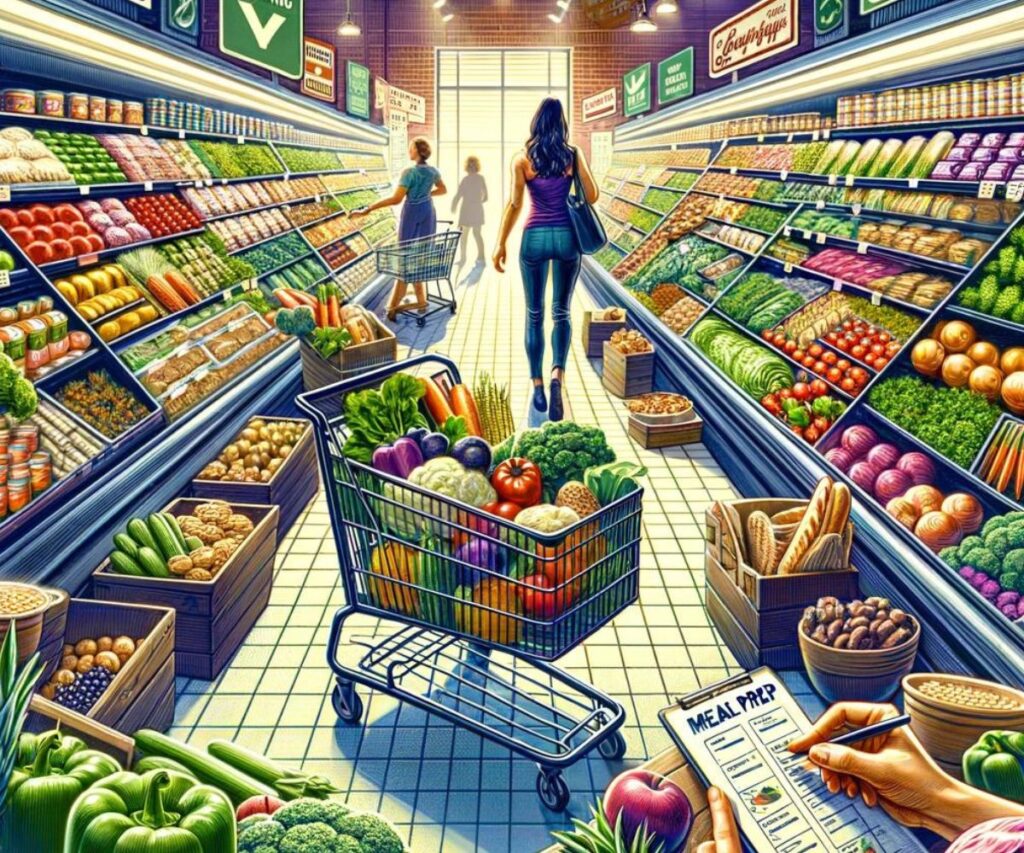
When it comes to meal prep, efficient grocery shopping is key. By following a few pro tips, you can streamline your shopping experience, maximize your efficiency, and minimize food waste.
In this section, I will provide a checklist of essential items to include in your grocery list and offer guidance for beginners on meal planning.
Before heading to the store, it’s important to have a meal prep grocery checklist. This will help you stay organized and ensure that you don’t forget any crucial ingredients. Your checklist should include:
- Protein sources: Include lean meats, such as chicken and fish, as well as vegetarian options like tofu and beans.
- Whole grains and legumes: Opt for nutrient-dense grains such as quinoa and whole wheat products. Don’t forget to include legumes like lentils and chickpeas.
- Fresh produce: Choose a variety of fruits and vegetables to add flavor, color, and nutrients to your meals.
- Healthy fats: Include sources of healthy fats, such as avocados, nuts, and seeds.
- Spices and herbs: Stock up on a selection of spices and herbs to add flavor to your meals without adding extra calories.
Pro Tip: Consider incorporating versatile ingredients that can be used in multiple meals throughout the week. This can help add variety to your meal-prepping routine.
To make the most of your grocery shopping trip, it’s important to plan your meals in advance. This will ensure that you have all the ingredients you need and help you avoid last-minute trips to the store. If you’re new to meal planning, start by selecting a few simple and beginner-friendly recipes. Consider your dietary goals, preferences, and any dietary restrictions you may have.
Pro Tip: Don’t be afraid to experiment with new recipes and ingredients. Meal prepping is a great opportunity to try out new flavors and expand your culinary skills.
Once you have your meal plan and grocery checklist ready, it’s time to hit the store. To maximize your efficiency and minimize food waste, keep these tips in mind:
- Stick to your list: Avoid impulse purchases and only buy what you need for your meal plan.
- Shop the perimeter: The perimeter of the grocery store is where you’ll find fresh produce, lean meats, and other whole foods. Focus on these areas to prioritize nutritious ingredients.
- Buy in bulk: Consider purchasing non-perishable items in bulk to save money and reduce packaging waste.
- Check for discounts: Look for sales, discounts, and coupons to stretch your budget further.
Pro Tip: Consider shopping during off-peak hours to avoid crowds and ensure a more relaxed shopping experience.
By following these pro tips, you can make your meal prep grocery shopping more efficient, organized, and budget-friendly. With a well-planned grocery list in hand, you’ll be ready to take on the week and enjoy the benefits of meal prepping.
Meal Prep Storage and Food Safety
In order to ensure the freshness and safety of your meal prepped dishes, it is crucial to pay attention to proper storage and food safety guidelines. I am not a food safety expert but I do try to follow all of FoodSafety.gov recommendations. By choosing the right containers and following refrigeration and freezing tips, you can maintain the quality and integrity of your prepared meals. Check out this article to learn more about meal prep and food storage.
Choosing the Right Containers
When it comes to meal prep containers, it is important to select options that are both practical and safe. Reusable plastic containers and glass containers are popular choices for storing meal prepped dishes. They are sturdy, easy to clean, and provide an airtight seal to keep your food fresh.
Refrigeration and Freezing Tips
Refrigeration is essential for keeping meal prepped dishes safe for consumption. Make sure to store your meals in the refrigerator as soon as they have cooled down. Keep the temperature of your refrigerator at or below 40 degrees Fahrenheit (4 degrees Celsius) to prevent bacterial growth.
When it comes to freezing, properly packaging your meals is crucial. Use freezer-safe containers or bags to prevent freezer burn and maintain the quality of your food. It is also important to label and date your frozen meals to keep track of their freshness.
For both refrigeration and freezing, it is recommended to consume or use your meal prepped dishes within a certain time frame. Check the guidelines below:
- Refrigeration: Consume your refrigerated meal prepped dishes within 3-4 days for optimum freshness and safety.
- Freezing: Most meal prepped dishes can be safely stored in the freezer for up to 2-3 months. However, it is recommended to consume them within 1-2 months for the best quality.
By following these food safety guidelines and proper storage techniques, you can enjoy delicious and nutritious meal prepped dishes without compromising on taste or safety.
Conclusion
In conclusion, meal prepping is a valuable strategy for individuals looking to save time, money, and prioritize their nutrition. Throughout this beginner’s guide, we have explored the importance of meal planning, understanding the basics of meal prepping, creating a meal plan, and essential components of a meal prep shopping list.
By incorporating variety into your meal prepping, utilizing budget-friendly shopping strategies, and investing in essential kitchen tools, you can streamline the process and make it more efficient. It is also crucial to pay attention to nutrition basics, portion control, and food safety guidelines to ensure you are consuming balanced and safe meals.
Now, it’s time to take action and start implementing meal prep into your weekly routine. With the knowledge and tools you have gained from this guide, you are well-equipped to save time, stick to your budget, and enjoy nutritious meals throughout the week. Don’t hesitate to experiment with different recipes, ingredients, and flavors to keep things exciting. Remember, meal prep is all about making your life easier and healthier. So, roll up your sleeves and get ready to achieve your meal prep goals!
FAQ
Why is meal prepping important?
Meal prepping is important because it saves time, money, and ensures you have nutritious meals readily available. It eliminates the need to make last-minute food choices and reduces the likelihood of unhealthy eating habits.
How do I get started with meal prep?
To get started with meal prep, begin by creating a meal plan for the week ahead. This involves selecting recipes, setting goals, and considering dietary requirements. Then, prepare a well-thought-out grocery list that includes all the essential ingredients needed for your meals.
What is meal prepping?
Meal prepping is the practice of preparing and portioning out meals in advance, typically for a week. It involves cooking and storing meals to be consumed later, ensuring you have healthy and convenient options readily available.
Who would benefit from meal prepping?
Meal prepping benefits busy individuals, those looking to save money, people who want to improve their nutrition, and individuals who want to reduce food waste. It is an effective strategy for those seeking convenience, efficiency, and a healthier lifestyle.
How can I create a meal plan?
Creating a meal plan involves planning meals in advance, considering dietary goals and requirements, and choosing beginner-friendly recipes. You can use a weekly meal plan template to help organize your meals and make the process easier.
What should be included in a meal prep shopping list for beginners?
A meal prep shopping list for beginners should include essential protein sources like chicken, fish, tofu, and beans. It should also include whole grains and legumes such as quinoa and lentils, as well as a selection of fresh produce like fruits and vegetables.
How can I shop for meal prep on a budget?
To shop for meal prep on a budget, consider buying in bulk to save money and reduce packaging waste. Shop for seasonal produce as it tends to be more affordable. Utilize coupons and discounts to further reduce expenses while grocery shopping for meal prep.
How can I incorporate variety into my meal prepping?
To incorporate variety into meal prepping, utilize versatile ingredients that can be used in multiple meals. Additionally, use different cooking techniques and flavors to keep your meals interesting. You can also repurpose leftovers and practice batch cooking to create diverse options.
What kitchen tools do I need for efficient meal prepping?
Basic kitchen tools like knives, cutting boards, measuring cups, and mixing bowls are essential for meal prepping. Advanced cooking equipment such as food processors and instant pots can enhance the process, but they are not necessary for beginners.
What are the nutrition basics to keep in mind while meal prepping?
When meal prepping, it’s important to focus on balanced meals and practice portion control. Incorporate a variety of nutrients from different food groups, and be mindful of your dietary needs and goals.
What are some pro tips for meal prep grocery shopping?
Some pro tips for meal prep grocery shopping include making a checklist of essential items, utilizing meal planning to align recipes and ingredients with your goals, and organizing your shopping trip to maximize efficiency and minimize food waste.
How do I store my meal prepped meals and ensure food safety?
Choose the right containers for storing your prepped meals, whether it’s reusable plastic containers or glass containers. Follow guidelines for refrigeration and freezing to ensure food safety, such as storing meals at appropriate temperatures and adhering to recommended storage times.
Source Links
- https://fitmencook.com/blog/meal-prep-grocery-list/
- https://mealprepmanual.com/beginners-guide-to-meal-prep/
- https://www.budgetbytes.com/meal-prep-101-a-beginners-guide/
Jim Lopez, the founder and editor of The Meal Prep Ninja, shares his journey from a passionate bodybuilder and fitness enthusiast to a certified nutrition coach. Certified by Precision Nutrition, Jim aims to empower others with knowledge on meal prep and nutrition, offering resources for busy individuals to enjoy low-calorie, tasty foods. His blog is a community for sharing healthy eating habits and meal prep recipes

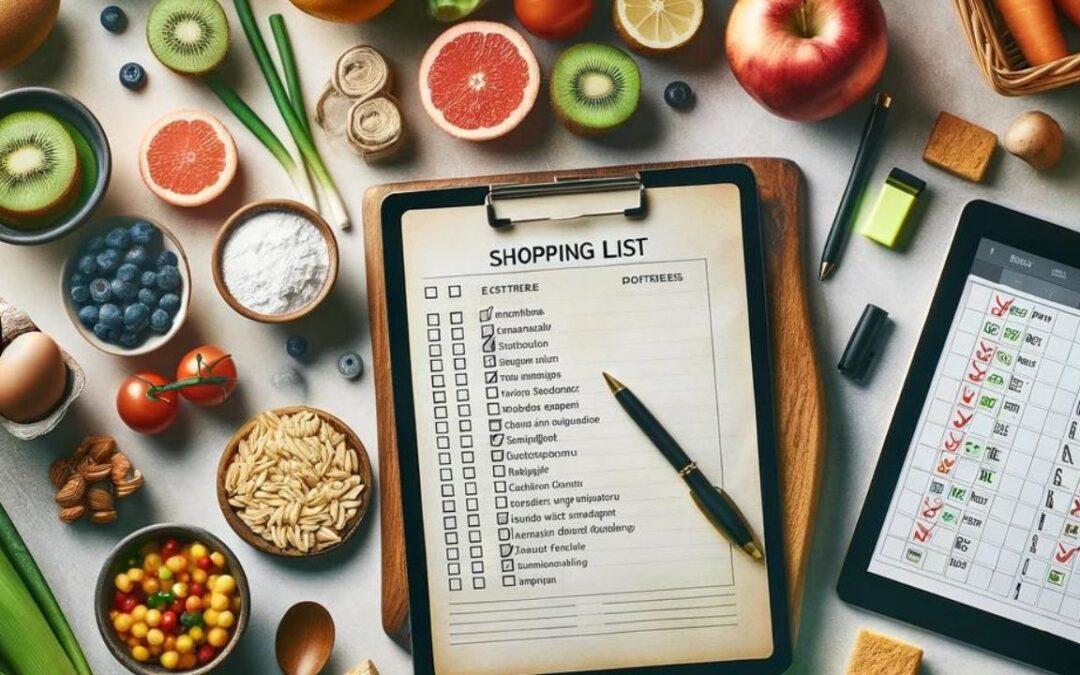



![Freshware Meal Prep Containers [15 Pack] 1 Compartment Food Storage Containers with Lids, Bento Box, BPA Free, Stackable, Microwave/Dishwasher/Freezer Safe (28 oz) Black](https://m.media-amazon.com/images/I/416Upq0nEJL._SL160_.jpg)


